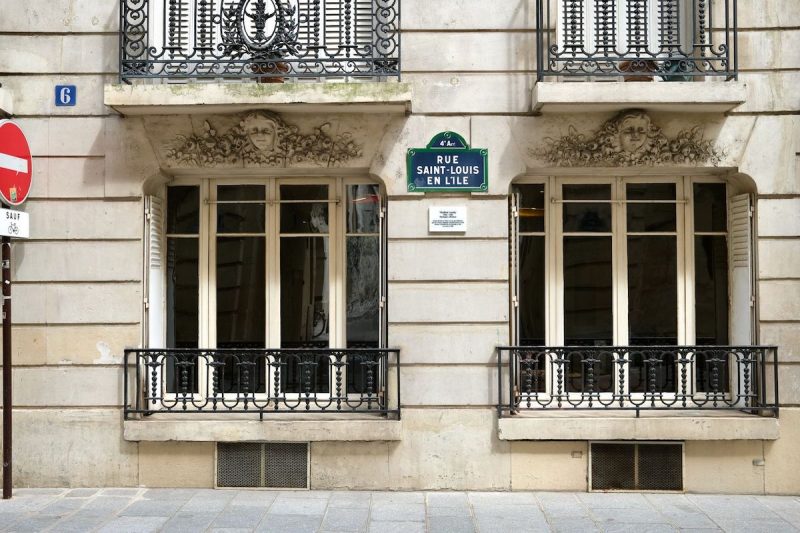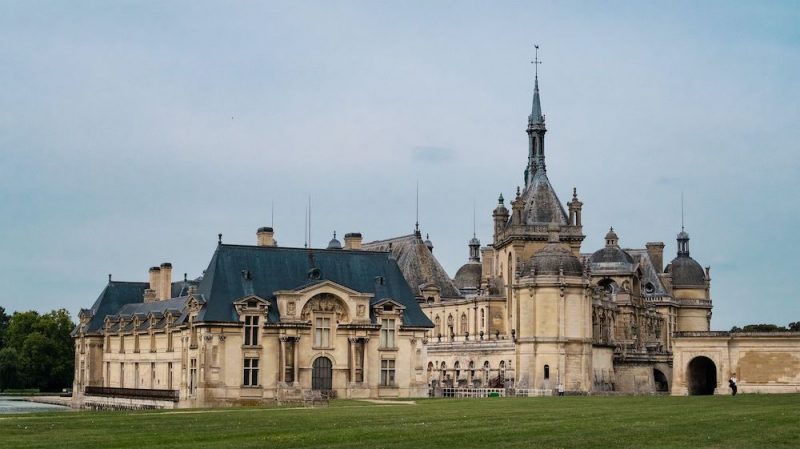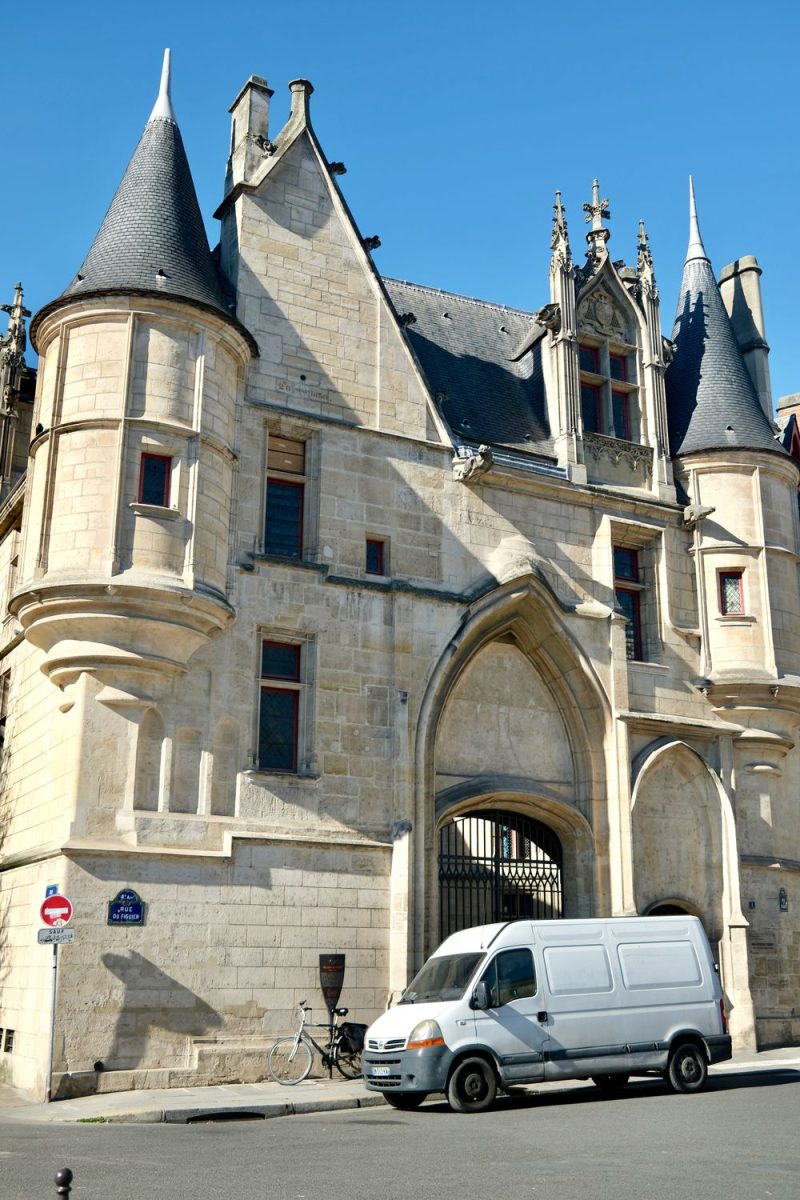12 Oldest Places in Paris
Culture Travel may earn a commission through links on this website. As an Amazon Associate, we earn from qualifying purchases.
Paris has captured the imaginations of locals and tourists alike for centuries. Originally settled by a Celtic tribe, Parisii, in 259 BC, Paris grew from the banks of the Seine into the cultural center we visit today. Over the centuries the city was conquered by Romans, threatened by Attila the Hun, survived the Bubonic Plague, a revolution, and Nazi occupation, but still came out as one of the world’s most popular tourist destinations.
Where are the oldest places in Paris? Let’s dive in.
The oldest places in Paris can be found all over town, but especially on the left bank near the Latin Quarter. Today, as you walk the streets of this famous city, keep your eyes peeled for Paris’ oldest places. Here is a list of some of the oldest Parisian places!
Oldest Bridge: Le Pont-Neuf
Constructed by Henri IV’s court in 1578, Le Pont-Neuf is considered Paris’ oldest stone bridge. Crossing the Seine, the bridge connects the Right Bank, Left Bank, and Île de la Cité with some of Paris’ most famous attractions such as the Louvre and the Monnaie de Paris. The bridge is made up of twelve stone arches and adorned with 384 “mascarons”, an architectural feature popular at the time meant to scare away demons and spirits with grotesque facial expressions.
You can visit the bridge in the 1er Arrondissement at the following address: Quai de la Mégisserie, Quai des Grands Augustins, 75001 Paris
Oldest Street: Rue Saint Jacques
Located in the Latin Quarter or 5er Arrondissement of Paris, the Rue Saint Jacques is Paris’ oldest street with a 2,000 year history.
Rue Saint Jacques was built in the first century BC under Roman rule. At this time, ancient Paris covered the Île de la Cité and part of the Right Bank of the Seine but was overall a much smaller city. The street runs north to south due to the leading city planning strategy at the time called a cardo maximus. This strategy was used in multiple Roman cities of this era and laid out the blocks on a north to south axis with a secondary thoroughfare running east to west.
The secondary street is called a decumanus maximus. Today, this street is named rue des Fossés Saint-Jacques .The most important intersection of ancient Paris is where these two streets, Rue de Saint Jacques and Rue des Fossés Saint-Jacques, intersect. From here, ancient Paris was drawn out, leaving this intersection as the city’s focal point.
Oldest Parisian Market: Les Enfants Rouges
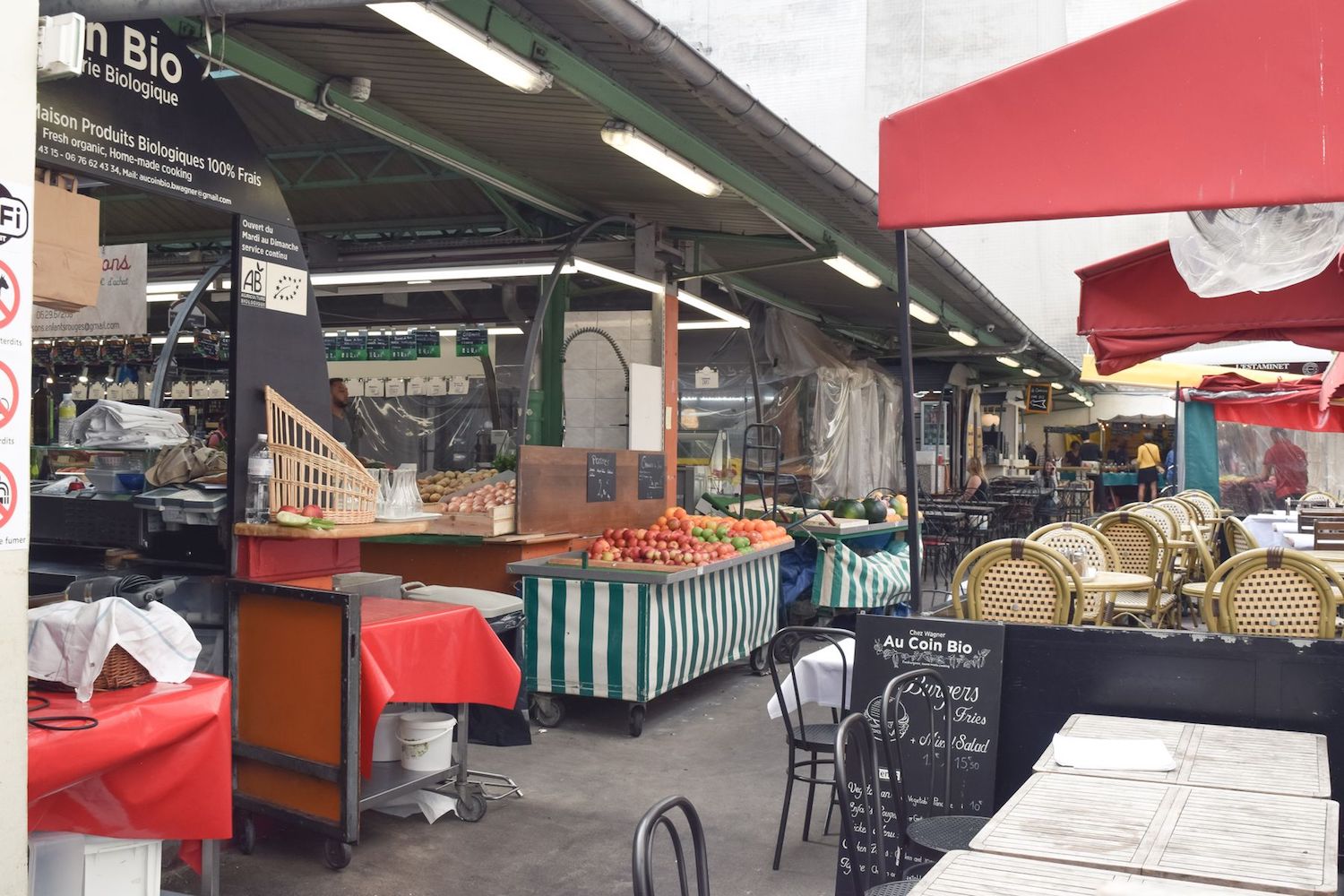
Built in 1615, the Marché des Enfants Rouges is Paris’ oldest covered market and features local booths selling produce, meats, cheeses, and more. Still a gem for both locals and visitors in town, the market offers fresh food and small restaurants just as it did when built under King Louis XIII.
However, today the deli and lunch offerings consist not only of French oysters, but also Japanese bento boxes, baklava and mint tea, and tiny sandwiches. The perfect stop for food lovers, the market provides culinary surprises for everyone in the shadow of Parisian history.
The market’s name, Marché des Enfants Rouge, translates to “the market of red children” and was named for the nearby orphanage and parade of red-coated youngsters who frequented the market in its early days of the 17th century.
The market is located in the 3rd arrondissement at 39 rue de Bretagne, 75003 Paris.
Oldest Museum: Musée Carnavalet
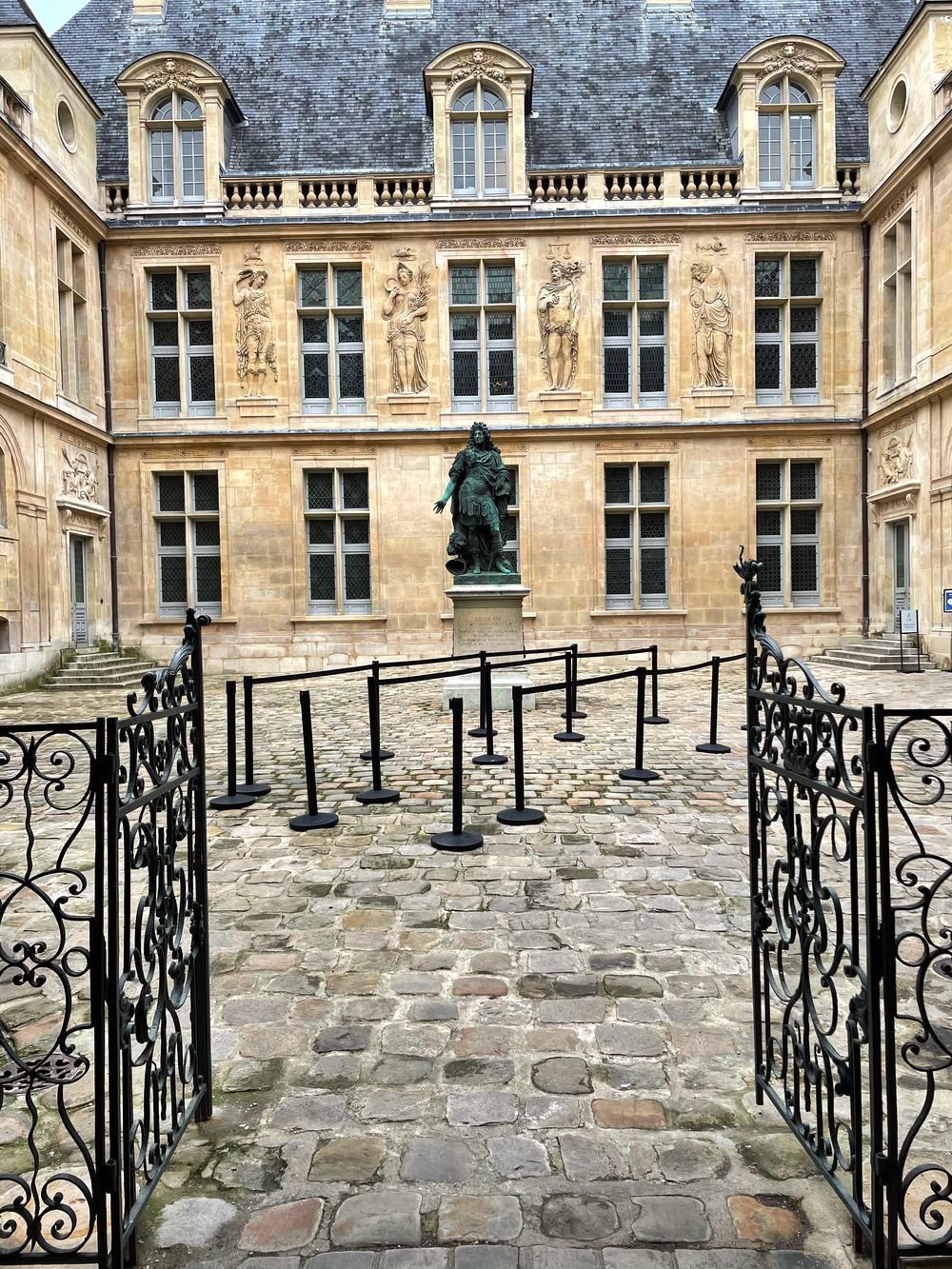
The Musée Carnavalet officially opened to the public in 1880. However, its history begins before its opening with its construction in 1548. Located in the 16th-century private mansion of Jacques de Ligneris, the president of the Parliament of Paris at the time, the mansion is an example of Renaissance architecture.
Later in 1866, the City of Paris bought the mansion in order to create a museum of the capital city. Perhaps one of the most interesting parts of Musée Carnavalet is the incorporation of demolished Parisian buildings into its renovations in the 19th century.
Featured at the museum are the remains of the arch of Nazareth, a relief of Henri IV, a statue of King Louis XIV, and the flag of Drapers. In addition, visitors can explore Paris’ history through archaeological artifacts, decorated rooms representing popular Parisian interiors, mementos of the French Revolution, and rotating exhibits on Paris’ historical characters.
After closing for five years in 2016, the museum reopened this summer in 2021 with fresh renovations and restorations.
The museum is located in the 3rd arrondissement at 23 rue de Sévigné, 75003 Paris.
Oldest House: Nicolas Flamel’s House

Built in 1407 by philanthropist Nicolas Flamel, this stone house has become the center of niche tourism, especially for alchemy, the occult, and Harry Potter. Originally an almshouse, Flamel never actually lived on the premises, but according to legend, this is where he practiced alchemy and turned metals into gold.
Though Nicolas Flamel was really just a Christian philanthropist who came into money after the death of his wife, Perenelle Flamel, the bookseller and scribe has been posthumously honored in occult legend.
With new discoveries in chemistry in the late 15th century, Europeans took an interest in alchemy and the occult, a supernatural power or magic. Many Parisians that had come into a fast fortune, as Flamel did after the death of his wife, were soon believed to be alchemists secretly forging golds from ordinary metals.
Due to Flamel’s philanthropic notoriety and inability to dispute the rumors — because he was dead — speculators began to paint him as one of the leading alchemists of the time. After the publication of Le Livre Flamel, a book about his supernatural adventures in alchemy and attributed to him, the legend was written in history.
Harry Potter fans also flock to the house after J.K Rowling used Nicholas Flamel as a leading historic character throughout the Harry Potter series and franchise. Taken with the legend, the author honored it in her fictional universe by making the philosopher’s stone, a legendary discovery of Flamel’s, part of the Deathly Hallows trio.
Today, tourists can enjoy the medieval facade and dine in a first-floor restaurant in the stone home.
The house is located in the 3rd Arrondissement at 51 Rue de Montmorency 75003 Paris.
Oldest Patisserie: Stohrer
Established in 1730, Stohrer Patisserie was originally built, owned, and operated by King Louis XV’s very own pastry chef, Nicolas Stohrer. With a beautiful interior decorated by 19th-century fresco painter, Paul Baudry, who later went on to decorate the Opéra Garnier, the patisserie is a feast for both the eyes and your taste buds.
All of Stohrer Patisserie’s treats are made in-house and honor Nicolas Stohrer’s legacy. Today, the patisserie still serves the rum babas invented by Stohrer after King Stanislas declared France’s cake too dry. This treat is one of Stohrer’s most popular and is served in three different styles.
Still situated at its original location in the 2nd arrondissement, visitors can get their own rum baba at 51 Rue Montorgueil, 75002 Paris.
Oldest Restaurant: La Petite Chaise
In 1680, La Petite Chaise established itself as Paris’ first restaurant when Georges Rameau began selling wines at the building located on the “Little Louvre”. With these wines, Rameau also served foods from local farmers and vendors thus establishing the building as a restaurant.
Over the years the La Petite Chaise became a bustling social hot spot for politicians, artists, writers, and even cabernet dancers. Anyone worthy of note dined at La Petite Chaise.
Today foodies can still eat at La Petite Chaise. The menu is traditionally French and has five-star reviews for its duck dishes and escargot. As a top-rated restaurant, however, you will need to make a reservation.
La Petite Chaise is located in the 7th arrondissement at 36 rue Grenelle 75007 Paris.
Oldest Zoo: Ménagerie at the Jardin des Plantes
Not only is Ménagerie at the Jardin des Plantes the oldest zoo in Paris, but it is the second oldest zoo in the world just behind Austria’s Tiergarten Schönbrunn. Opened in 1794, the zoo has been popular with Parisians and tourists for over 200 years.
Before the zoo opened, animals were exhibited in city streets by their private caretakers. However, in 1793 this type of exhibition was banned in Paris leaving the caretakers and animals no choice but to come up with a new type of exhibition. When the zoo opened from the private royal zoo at Versailles and the Duke of Orléans’ zoo was brought to Paris to join the animals previously shown in the streets.
The caretakers of the street animals became the zoo’s first zookeepers. At its opening Ménagerie at the Jardin des Plantes had 58 animals. Over the years animals were added to the zoo as French diplomats like Napoleon were gifted animals from other foreign monarchs. Specimen hunters also collected and brought back live animals from the field for display.
In addition to animals, the zoo also boasts a timeline of architectural history. With a magnificent rotunda built in 1812 and monumental art deco buildings built for the 1937 construction of the Big Cat House, the zoo is a beautiful walk through time.
Now, the zoo’s most famous resident is Nénette, a 52-year-old orangutan and an artist – yes, she picked up painting unprompted in the 70s and even sold one for over a thousand euros! The zoo also boasts enclosures with panthers, mountain goats, red pandas, and more.
The Ménagerie at the Jardin des Plantes is located in the 5th Arrondissement at 57 Rue Cuvier 75005 Paris.
Oldest Neighborhood: Latin Quarter
Found within the 5th arrondissement, the Latin Quarter is Paris’ oldest neighborhood and one of the best places in the city to see its Medieval origins. Dating back to the 1st century, the cobblestone streets are a reminder that the history of this district is rich. The title, “Latin Quarter”, came from the neighborhood’s original inhabitants: the students at Sorbonne University. Because of the Roman rule, the students spoke primarily Latin hence the district’s name.
Some of the Latin Quarter’s best attractions include: Arènes de Lutèce, Thermes de Cluny, The Ménagerie at the Jardin des Plantes, Musée Curie, the Natural History Museum, and the Pantheon.
Arènes de Lutèce
The Arènes de Lutèce are two arenas within the Latin Quarter. These were built in the 1st and 2nd centuries and were gathering places for Paris citizens. Here, much like the Roman Colosseum, a crowd of 15,000 people could watch gladiators, animal fights, and water combat.
Today the arenas are listed as historical monuments but are largely abandoned. After falling into ruin during the Middle Ages, they were not discovered until the 1800s, far too late to restore them to their original glory. Now, you can find local children playing in the ruins.
The arenas are located off the Rue Monge.
Thermes de Cluny
Also built in the 1st or 2nd century, the Thermes de Cluny was the largest public bath in early Paris. Though only the frigidarium, or cold room, still stands today, archeologists have determined that the bathes had three levels of operating systems and rooms.
The baths are a window into the amazing feats of Roman infrastructure. The first level consisted of an expansive hydraulic network with sewer pipes and hypocaust pillars – a heating system that heats from the floor of a room. The second level contained utility rooms and the third was the ground floor with the frigidarium and hot pools.
The baths were listed as a historic monument in 1862 and though never fully restored, the pillars left standing are some of the best-preserved in Northern France.
The baths’ ruins are located at 28 Rue du Sommerard.
Oldest Square: Place des Vosges
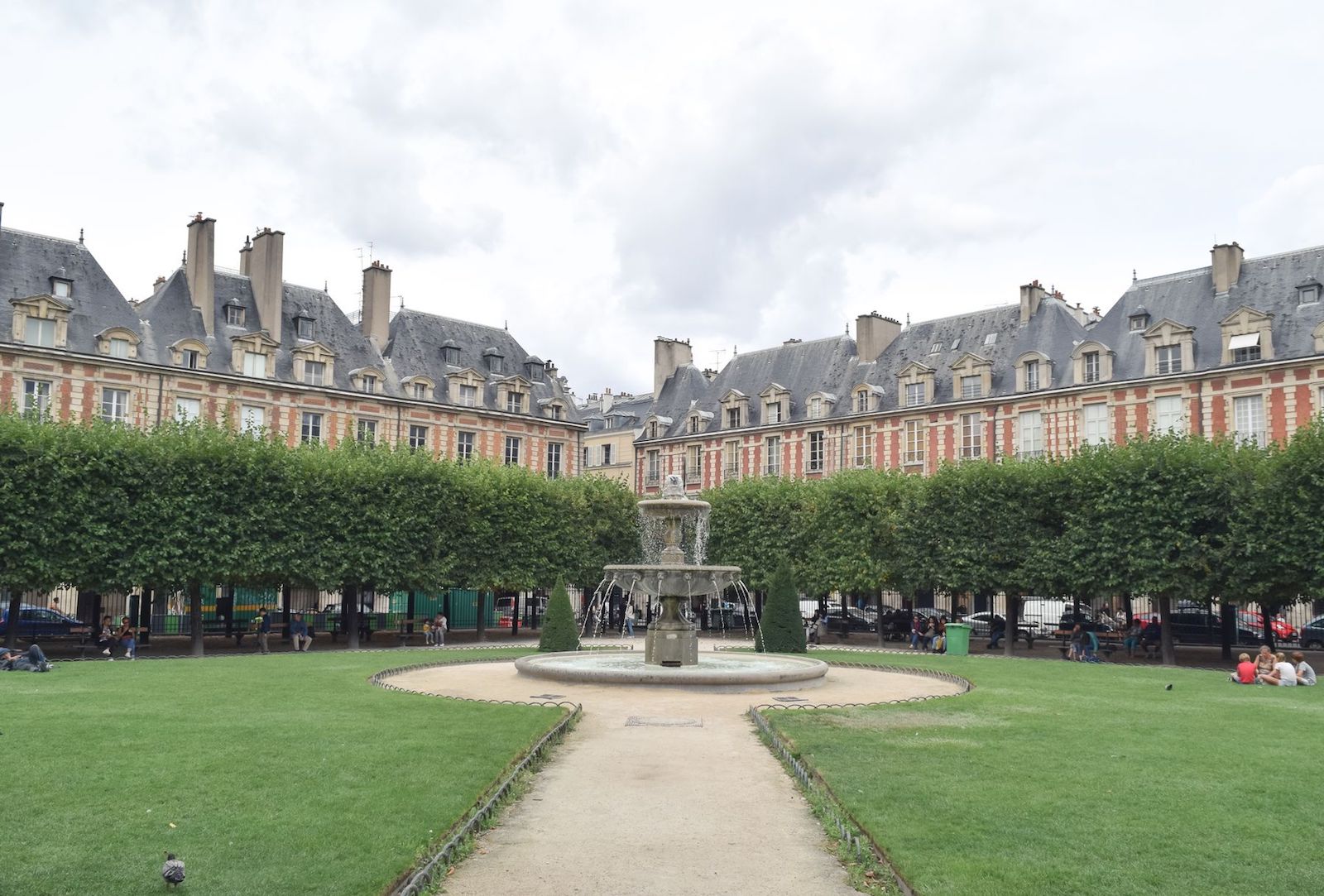
Originally not a square at all, but a castle, Place des Vosges began its life as the Château des Tournelles. However, after Henry II died in the palace, his wife, Catherine de Medici demanded the castle be destroyed.
Forty years after the castle’s destruction, King Henry IV began work on a Royal Square to replace it. With identical buildings and pavilions built on each side of the square, the area is an architectural treat to stroll through and one of Paris’ best-preserved squares. With gardens, restaurants, and shops, the square provides a relaxing walk for any type of tourist.
A 14th-century marvel, the square is located in the 4th arrondissement at Place des Vosges, 75004 Paris.
That concludes our mini-tour of the oldest places in Paris! Have fun as you explore these locations that seem to make us travel through time.

